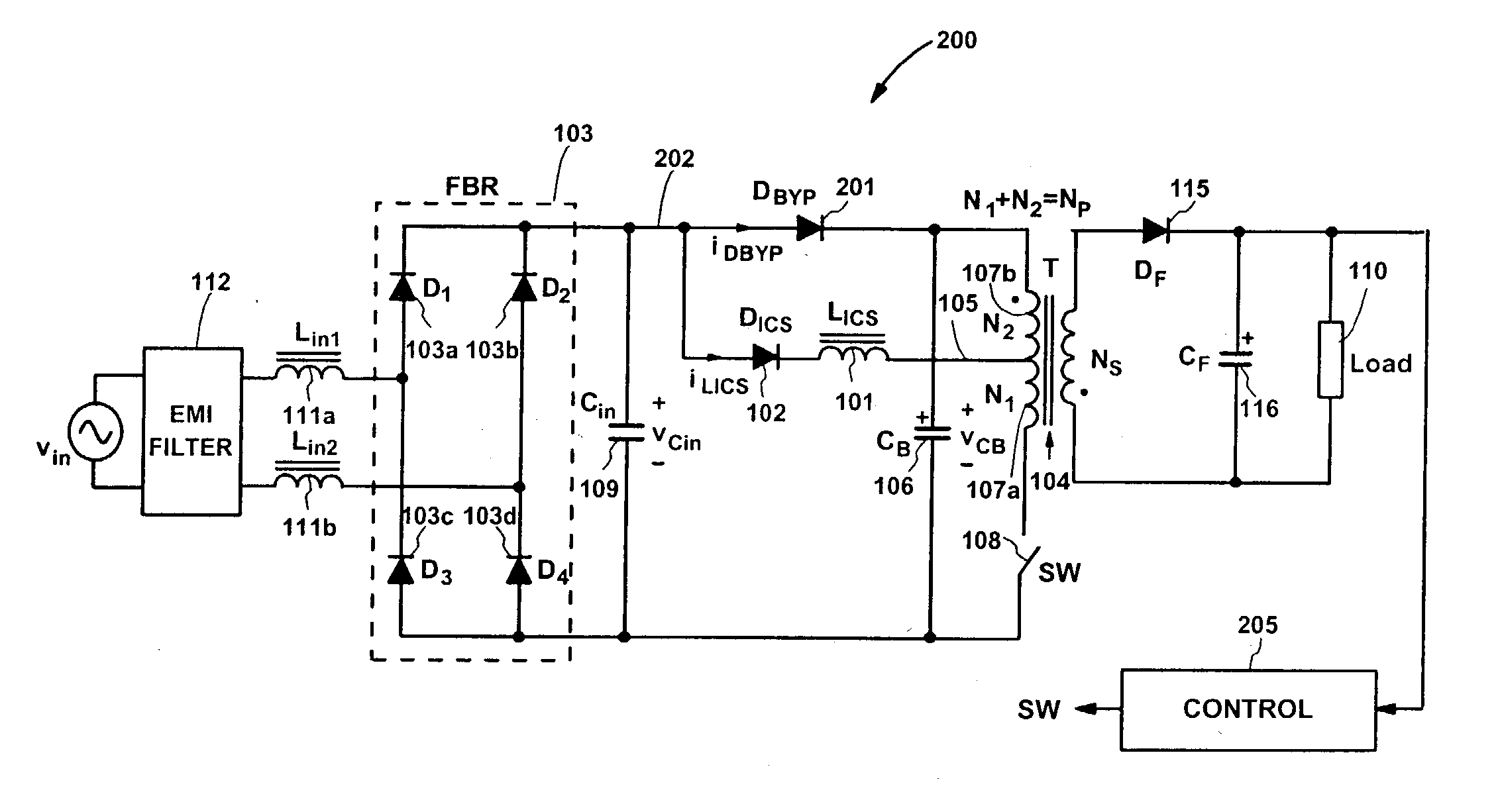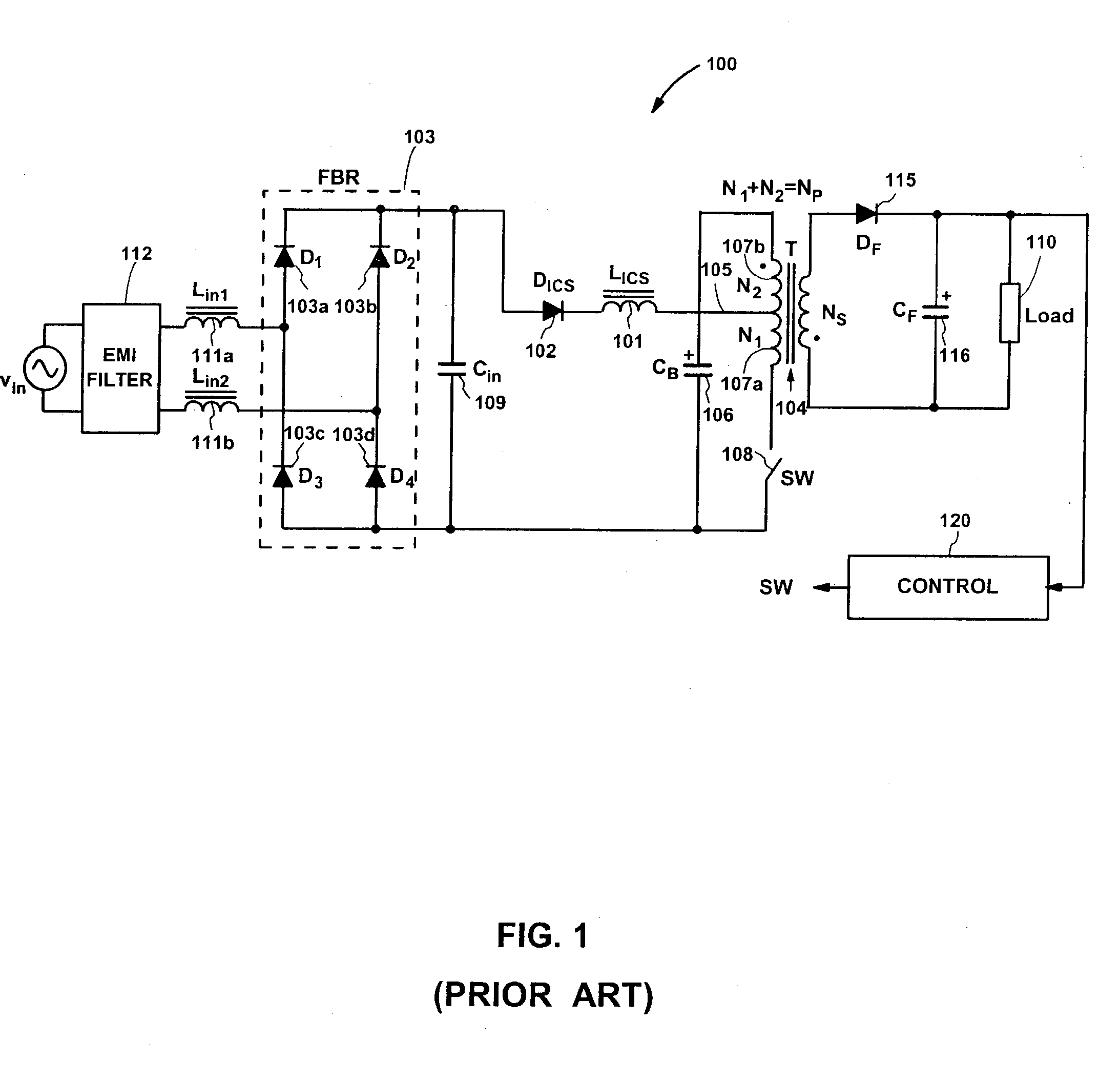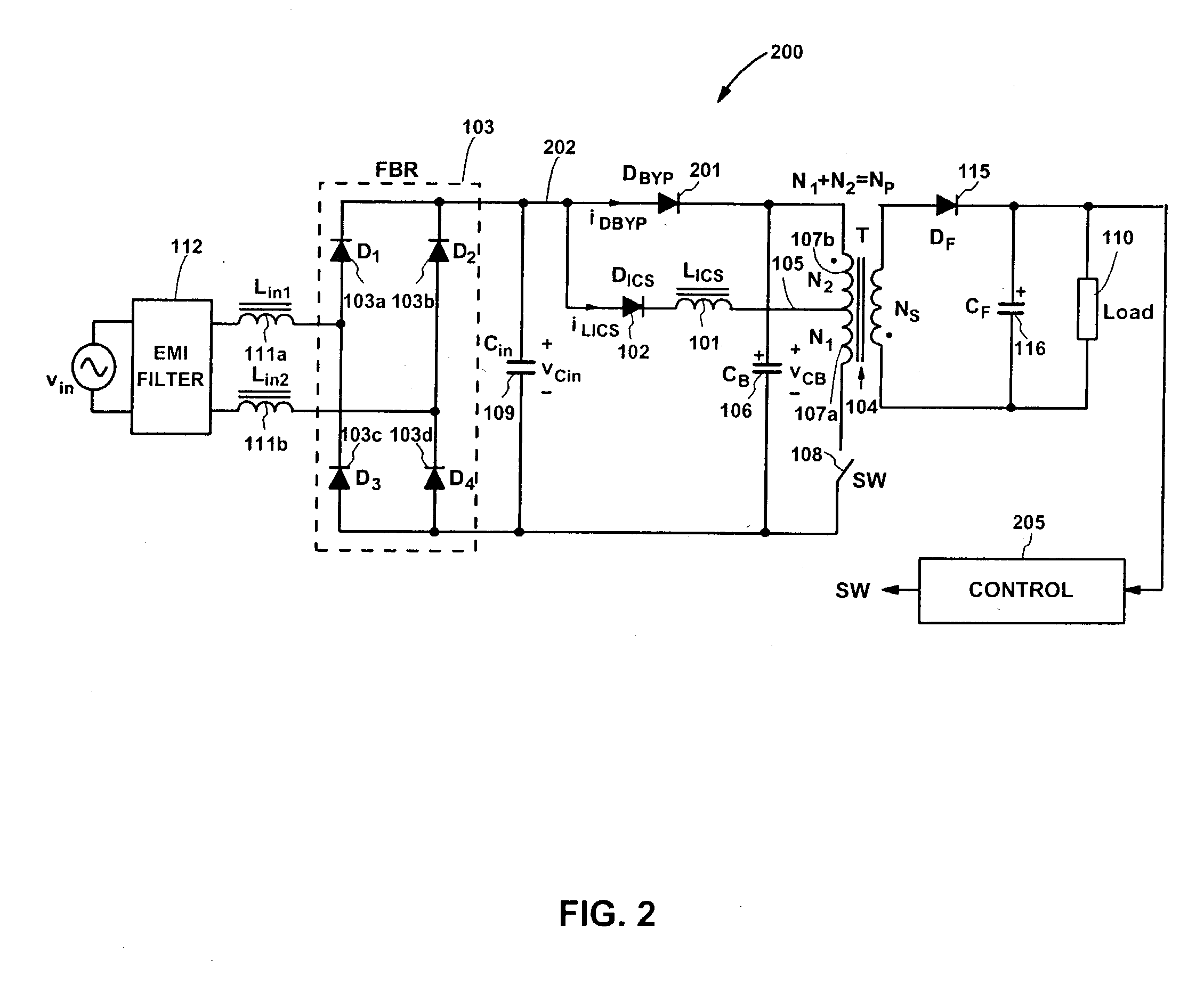AC/DC flyback converter
a converter and input current technology, applied in the field of improved single-stage inputcurrent shaping flyback converters, can solve the problems of increasing line current harmonics, reducing input power factor and reducing total harmonic distortion (thd), and not improving power factor (pf) and reducing thd as much as their two-stage counterparts,
- Summary
- Abstract
- Description
- Claims
- Application Information
AI Technical Summary
Benefits of technology
Problems solved by technology
Method used
Image
Examples
Embodiment Construction
[0038] FIG. 2 is a circuit diagram of S.sup.2ICS flyback converter 200, according to one embodiment of the present invention. As shown in FIG. 2, S.sup.2ICS flyback converter 200 is substantially the same as S.sup.2ICS flyback converter 100 of FIG. 1, except that bypass diode 201 (D.sub.BYP) is connected between the positive terminal of full-bridge rectifier (FBR) 103 and the positive terminal of energy-storage (bulk) capacitor 106 (C.sub.B). A control circuit 205 provides a control signal SW for periodically opening and closing switch 108, according to a switching control scheme. One such scheme, for example, opens and closes switch 108 at a variable frequency such that transformer 104 operates at the boundary between discontinuous and continuous conduction modes. Secondary-side rectifier 115 can be implemented either with a Schottky rectifier or with a synchronous rectifier.
[0039] FIGS. 3(a), 3(b) and 3(c) illustrate the basic operation of bypass diode 201 and the effects of diode...
PUM
 Login to View More
Login to View More Abstract
Description
Claims
Application Information
 Login to View More
Login to View More - R&D
- Intellectual Property
- Life Sciences
- Materials
- Tech Scout
- Unparalleled Data Quality
- Higher Quality Content
- 60% Fewer Hallucinations
Browse by: Latest US Patents, China's latest patents, Technical Efficacy Thesaurus, Application Domain, Technology Topic, Popular Technical Reports.
© 2025 PatSnap. All rights reserved.Legal|Privacy policy|Modern Slavery Act Transparency Statement|Sitemap|About US| Contact US: help@patsnap.com



